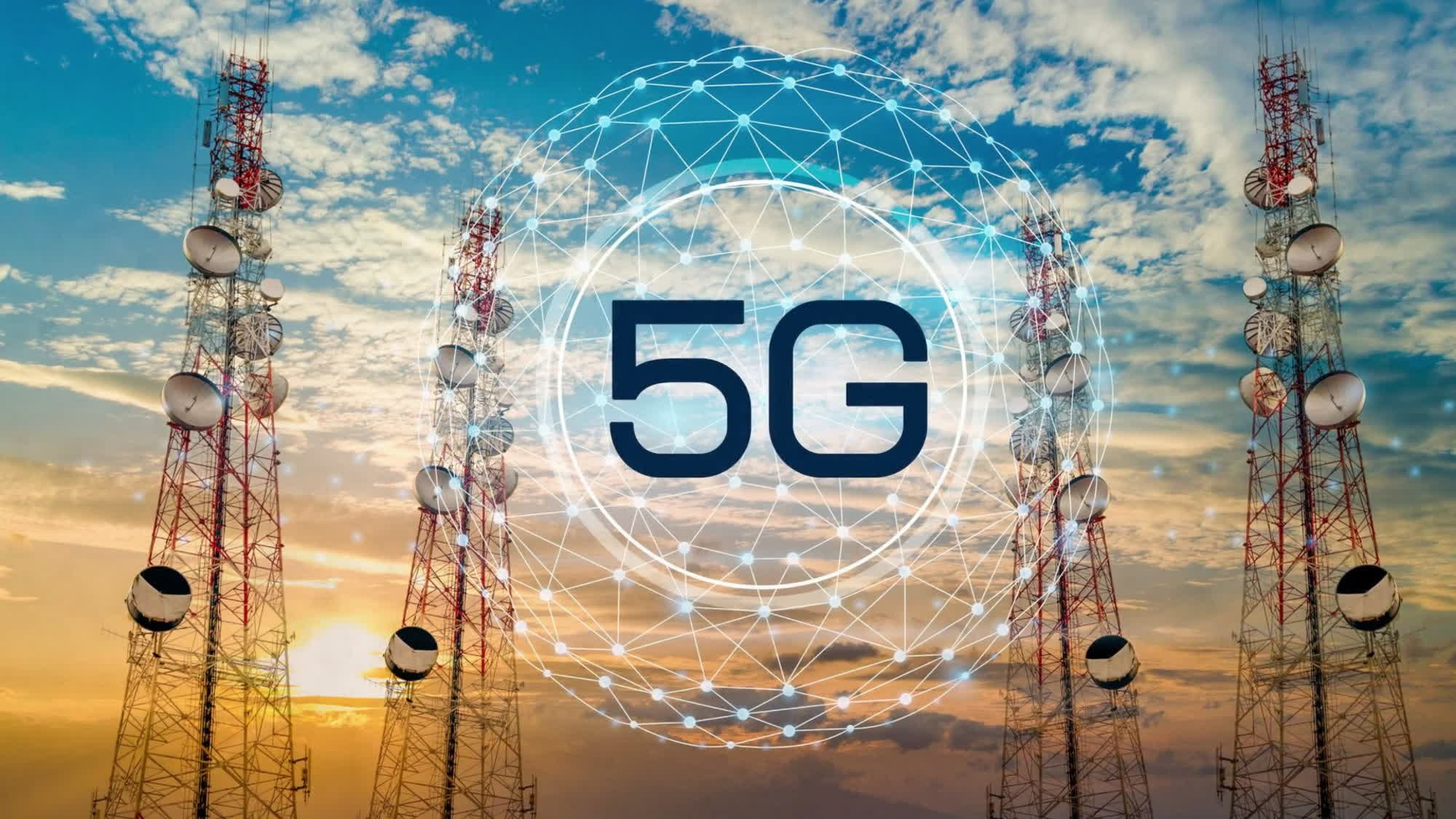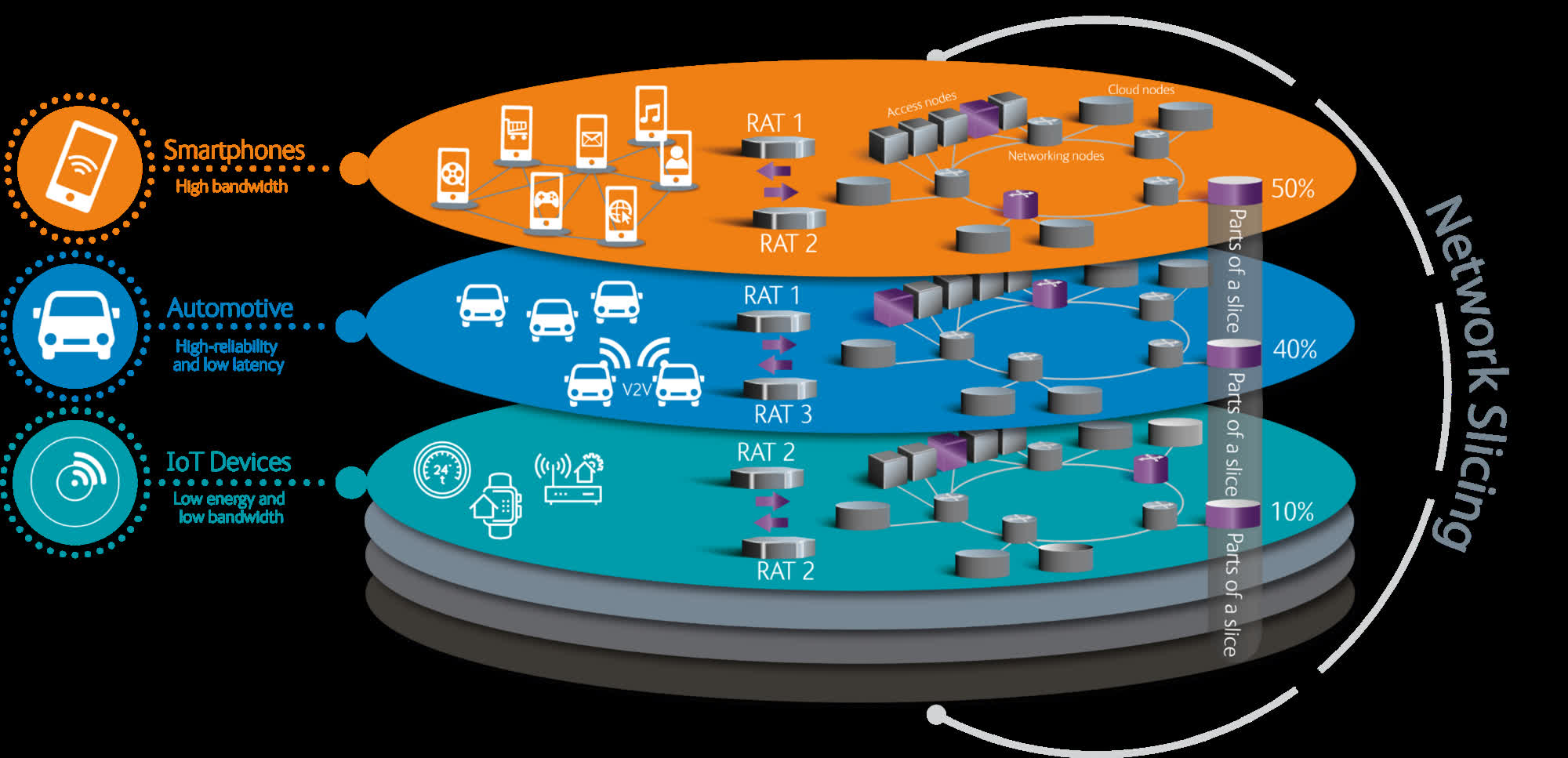The big picture: 5G technology promised to revolutionize mobile networking, but the world is still waiting for this future to become a reality. Meanwhile, major network operators are making significant progress in delivering additional building blocks for 5G networks.

BT Group recently demonstrated 5G network slicing capabilities at its Adastral Park research lab. Network slicing has long been promised as an essential feature of the 5G standard, and the British telecom giant has finally shown that the technology can significantly improve bandwidth and service delivery on next-generation mobile networks.
5G network slicing is a network virtualization architecture that essentially divides "slices" of mobile broadband into independent logical networks. These slices can function as isolated end-to-end connectivity services atop the same physical 5G network infrastructure. Proper 5G slicing requires a 5G Standalone (5G SA) network, which is a fully autonomous 5G infrastructure with no intermediaries or compatibility bridges for previous-generation networks like 4G.
To demonstrate network slicing in action, BT Group employed a 5G SA provided by Ericsson and a Samsung Galaxy S23 Ultra smartphone based on the Snapdragon 8 Gen 2 SoC. The mobile device was able to connect to different 5G slices for individual gaming, enterprise, and Enhanced Mobile Broadband (eMBB) network applications, as explained by BT.
5G network slicing can seemingly enhance performance, bandwidth availability, and latency, providing an "immersive experience" in the upcoming 5G SA era, according to BT. The slicing paradigm was tested with an "optimal" gaming experience on Nvidia's cloud platform GeForce Now, maintaining a data throughput in excess of the recommended 25 Mbps rate for 1080p gameplay.
BT also initiated a native gaming session in Fortnite, while enterprise use cases were tested with eMBB slices that can provide multiple connections to different network slices simultaneously. The Samsung S23 Ultra test device maintained a "consistent" 4K video stream, thanks to a stable connection and low jitter levels.
BT Chief Networks Officer Greg McCall stated that 5G network slicing enables telecoms to "differentiate quality of service" with optimized performance for different market segments. The slicing demo has been a significant milestone, McCall said, and an early sign of the new services 5G SA networks will provide to customers.
In the 5G SA-based patchwork of different virtual networks BT Group is conceiving, every single slice gets sold to a different mobile virtual network operator (MVNO). According to Gartner VP analyst Bill Ray, many physical operators are planning to sell slices of their 5G SA networks, but enterprise organizations interested in becoming MVNOs are still to materialize.
https://www.techspot.com/news/101832-bt-group-shows-5g-network-slicing-action-first.html
